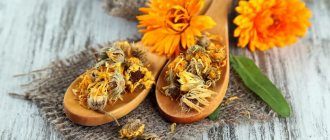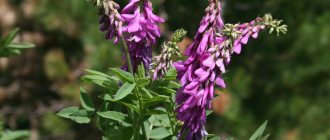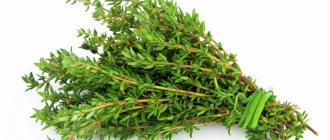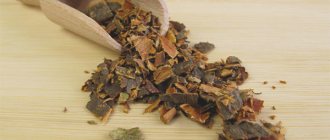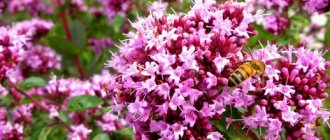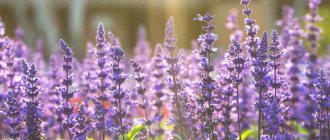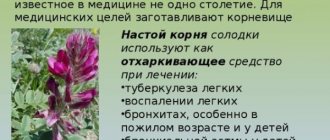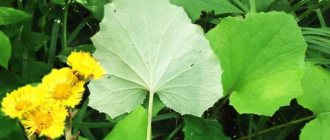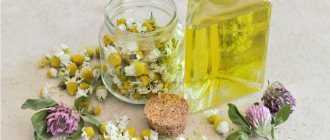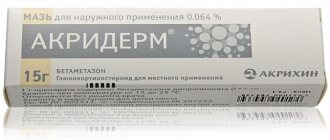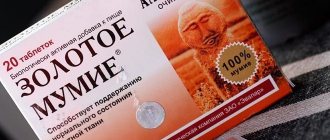From late June to late autumn, the bright yellow or orange-red flowers of Calendula officinalis (marigold) attract attention and delight the eye. This beautiful ornamental plant is also used for medicinal purposes. If there are no contraindications, you can prepare tea with calendula, infusions, decoctions, and add flowers to restorative or soothing mixtures.
Chemical composition of calendula officinalis:
Calendula flower baskets contain carotenoids - carotene, rubixanthin, lycopene, citroxanthin, violoxanthin, flavochrome, flavoxanthin, etc. Brightly colored varieties of marigolds are especially rich in carotenoids. In addition, paraffin hydrocarbons (gentriacontane and sitosterol), resins, triterpene glycosides, mucous and bitter substances, organic acids (malic, pentadecylic, salicylic), and ascorbic acid were found in calendula flowers.
All these active ingredients form the basis of the chemical composition of calendula officinalis (marigold).
Pharmacological properties of calendula officinalis:
The pharmacological properties of calendula are determined by its chemical composition.
An experimental study of calendula herbal preparations showed that they have a wide range of pharmacological activity, which is due to the rich content of such biologically active compounds in the flowers of the plant as carotenoids, flavonoids, and vitamins.
When studying the general effect and acute toxicity of galenic preparations of calendula, it was found that they are low-toxic and have a noticeable inhibitory effect on the motor activity and reflex excitability of animals. This biological activity was confirmed in experiments studying the effect of calendula preparations on the hypnotic effects of drugs and in determining antagonism to the action of central nervous system stimulants.
The experiments revealed a noticeable sedative effect of the herbal forms of the plant, which was characterized by an extension of the sleep period and was characterized by antagonism towards central nervous system stimulants.
The effect of calendula preparations on the activity of the cardiovascular system was manifested by a clear cardiotonic and hypotensive effect. When calendula preparations were administered to animals in large doses, their blood pressure decreased by 30–40% of the initial level, heart contractions slowed down and the amplitude of heart contractions slightly increased, and breathing slowed down and deepened.
However, the main properties of galenic forms and herbal preparations from calendula officinalis are anti-inflammatory, early healing, bactericidal, antispasmodic and choleretic.
The anti-inflammatory properties of calendula are manifested in experimental models of inflammation of both septic and aseptic nature. In addition, the action of calendula preparations improves regeneration processes. Although the bactericidal properties of calendula in relation to streptococci and staphylococci are insignificantly expressed, in general, inflammatory processes complicated by bacterial flora, under the influence of galenic forms of the plant, proceed more favorably, apparently due to increased growth of granulations, improved epithelization and increased local protective mechanisms.
Calendula flowers have antispasmodic properties. By relaxing the smooth muscle structures of organs such as the stomach, intestines and liver, calendula at the same time stimulates secretory activity, which enhances bile formation and bile secretion and increases the secretory activity of the stomach.
Price of ointment with calendula
Medicinal products for topical use containing flowers of a medicinal plant are sold in pharmacies without prescriptions. Ointments are easy to buy by placing an order through online sites. The price range for drugs containing calendula and analogues is in rubles for Moscow residents:
| Quantity, gram | Price range, rub. | |
| Calendula ointment | 30 | 25-70 |
| homeopathic | 30 | 80-135 |
The cost of analogue drugs depends on the quantity in the tube, the manufacturer, and the pharmacy’s markup. For Moscow, the price range is within:
| A drug | Quantity, gram | Price range, rub. |
| Ichthyol ointment | 25 | 80-125 |
| Solcoseryl | 20 | 230-300 |
| Levomekol | 40 | 100-140 |
| Pantoderm | 30 | 180-250 |
| Methyluracil | 25 | 35-90 |
| Vulnuzan | 45 | 150-200 |
| Dexpanthenol | 20 | 120-175 |
| Contractubex | 20 | 500-650 |
Use of calendula in medicine, treatment with calendula:
The clinical use of calendula is mainly due to its antiseptic, anti-inflammatory and wound healing effects, both externally and internally.
As an external remedy, calendula preparations are used in dental practice for diseases of the oral cavity (thrush in children, gingivitis, pyorrhea, inflammatory-dystrophic form of periodontal disease).
Clinical observations have shown that abundant irrigation of the oral cavity with an aqueous solution of calendula tincture (1 teaspoon per glass of water) before and after removing tartar, placing turundas, abundantly moistened with undiluted calendula tincture, into pathological gingival pockets relieved inflammation, reduced or stopped discharge from gum pockets, bleeding gums, contributed to the compaction of gingival tissue, which is due to the presence in calendula flowers of a large number of carotenoids, flavonoids, which have capillary-strengthening activity. The most lasting therapeutic effect was observed with complex treatment (vitamin therapy, physiotherapy).
Gargling with calendula tincture is used in the treatment of tonsillitis, and in combination with sulfonamide drugs and antibiotics - for the treatment of sore throats.
Calendula tincture in the form of douches (1 teaspoon per glass of water) is also used in gynecological practice for the treatment of cervical erosions and Trichomonas colpitis.
A positive anti-inflammatory effect is observed in the treatment of proctitis and paraproctitis. In this case, calendula tincture (1 teaspoon per 1/4 cup of water) is used in the form of enemas.
When treating chronic fistulas, an infusion (1:10) of calendula in equal parts with a 3% solution of boric acid is injected into the fistula canal.
In addition, tinctures, ointments, emulsions, and fresh calendula juice are used externally for minor wounds, cuts, bruises, burns, and furunculosis.
There is information about the positive effect of calendula tincture on blepharitis.
Calendula is used internally for a number of diseases.
A positive effect of calendula preparations has been noted for cardiovascular diseases accompanied by palpitations, shortness of breath, and edema. Calendula, having a sedative and mild hypotensive effect, helps normalize cardiac activity and reduce swelling.
In gastroenterological practice, calendula is used as an anti-inflammatory, early healing, antispasmodic and choleretic agent. The beneficial effect of calendula (1 teaspoon per glass of water, 1/2–1/3 glass per dose between meals) was noted for gastritis, gastric and duodenal ulcers, colitis, enterocolitis. The best results are observed with the combined use of calendula with chamomile and yarrow.
The use of calendula preparations for diseases of the gastrointestinal tract is associated with their high therapeutic effectiveness in inflammatory-dystrophic processes of the mucous membranes and parenchymal tissue of internal organs. In this regard, the use of calendula for diseases of the liver and biliary tract is justified.
The high content of carotenoids, flavonoids, ascorbic acid and organic acids in calendula flowers causes an increase in the metabolic function of the liver - the composition of bile improves, the concentration of bilirubin and cholesterol in it decreases, and the secretory and excretory functions increase. The therapeutic effect is most pronounced when calendula is combined with chamomile preparations, which have additional antispasmodic, antibacterial and anti-inflammatory effects, helping to eliminate the onset of infection and the inflammatory process. As a result of the action of these plants, biliary function improves, which helps eliminate bile stagnation in the gallbladder.
Infusion of calendula flowers:
Infusion of calendula flowers (Infusum Calendulae): 20 g (2 tablespoons) of flowers are placed in an enamel bowl, pour 200 ml (1 glass) of hot boiled water, cover with a lid and heat in boiling water (in a water bath) with frequent stirring for 15 minutes, cool for 45 minutes at room temperature, filter, and squeeze out the remaining raw material. The volume of the resulting infusion is adjusted to 200 ml with boiled water.
The prepared calendula infusion is stored in a cool place for no more than 2 days.
Take the infusion warm, 1-2 tablespoons 2-3 times a day.
Calendula officinalis flowers are available in packs of 100 g. They are stored in a cool, dry place.
Calendula officinalis (marigold) – Calendula officinalis L. Family Asteraceae – Compositae
medicinal marigolds, pharmaceutical marigold.
Side effects and contraindications
If you follow the instructions for use and avoid overdosing the drug during application, then unpleasant consequences will be eliminated. Side effects occur when the rules of use are violated, the patient’s individual sensitivity to the drug, or the drug is used after the expiration date. These include:
- swelling;
- skin rashes;
- redness;
- burning;
- itching;
- hives;
- angioedema.
A herbal medicine must be used taking into account contraindications so as not to cause complications. The ointment is used with caution during pregnancy and during lactation - consultation with a doctor is required. Restrictions for use are:
- allergy to flowering plants from the Asteraceae family, components in the composition;
- hypersensitivity;
- individual intolerance;
- child's age up to six years;
- bronchial asthma.
Chemical composition of calendula officinalis:
Calendula flower baskets contain carotenoids - carotene, rubixanthin, lycopene, citroxanthin, violoxanthin, flavochrome, flavoxanthin, etc. Brightly colored varieties of marigolds are especially rich in carotenoids. In addition, paraffin hydrocarbons (gentriacontane and sitosterol), resins, triterpene glycosides, mucous and bitter substances, organic acids (malic, pentadecylic, salicylic), and ascorbic acid were found in calendula flowers.
All these active ingredients form the basis of the chemical composition of calendula officinalis (marigold).
Pharmacological properties of calendula officinalis:
The pharmacological properties of calendula are determined by its chemical composition.
An experimental study of calendula herbal preparations showed that they have a wide range of pharmacological activity, which is due to the rich content of such biologically active compounds in the flowers of the plant as carotenoids, flavonoids, and vitamins.
When studying the general effect and acute toxicity of galenic preparations of calendula, it was found that they are low-toxic and have a noticeable inhibitory effect on the motor activity and reflex excitability of animals. This biological activity was confirmed in experiments studying the effect of calendula preparations on the hypnotic effects of drugs and in determining antagonism to the action of central nervous system stimulants.
The experiments revealed a noticeable sedative effect of the herbal forms of the plant, which was characterized by an extension of the sleep period and was characterized by antagonism towards central nervous system stimulants.
The effect of calendula preparations on the activity of the cardiovascular system was manifested by a clear cardiotonic and hypotensive effect. When calendula preparations were administered to animals in large doses, their blood pressure decreased by 30–40% of the initial level, heart contractions slowed down and the amplitude of heart contractions slightly increased, and breathing slowed down and deepened.
However, the main properties of galenic forms and herbal preparations from calendula officinalis are anti-inflammatory, early healing, bactericidal, antispasmodic and choleretic.
The anti-inflammatory properties of calendula are manifested in experimental models of inflammation of both septic and aseptic nature. In addition, the action of calendula preparations improves regeneration processes. Although the bactericidal properties of calendula in relation to streptococci and staphylococci are insignificantly expressed, in general, inflammatory processes complicated by bacterial flora, under the influence of galenic forms of the plant, proceed more favorably, apparently due to increased growth of granulations, improved epithelization and increased local protective mechanisms.
Calendula flowers have antispasmodic properties. By relaxing the smooth muscle structures of organs such as the stomach, intestines and liver, calendula at the same time stimulates secretory activity, which enhances bile formation and bile secretion and increases the secretory activity of the stomach.
Use of calendula in medicine, treatment with calendula:
The clinical use of calendula is mainly due to its antiseptic, anti-inflammatory and wound healing effects, both externally and internally.
As an external remedy, calendula preparations are used in dental practice for diseases of the oral cavity (thrush in children, gingivitis, pyorrhea, inflammatory-dystrophic form of periodontal disease).
Clinical observations have shown that abundant irrigation of the oral cavity with an aqueous solution of calendula tincture (1 teaspoon per glass of water) before and after removing tartar, placing turundas, abundantly moistened with undiluted calendula tincture, into pathological gingival pockets relieved inflammation, reduced or stopped discharge from gum pockets, bleeding gums, contributed to the compaction of gingival tissue, which is due to the presence in calendula flowers of a large number of carotenoids, flavonoids, which have capillary-strengthening activity. The most lasting therapeutic effect was observed with complex treatment (vitamin therapy, physiotherapy).
Gargling with calendula tincture is used in the treatment of tonsillitis, and in combination with sulfonamide drugs and antibiotics - for the treatment of sore throats.
Calendula tincture in the form of douches (1 teaspoon per glass of water) is also used in gynecological practice for the treatment of cervical erosions and Trichomonas colpitis.
A positive anti-inflammatory effect is observed in the treatment of proctitis and paraproctitis. In this case, calendula tincture (1 teaspoon per 1/4 cup of water) is used in the form of enemas.
When treating chronic fistulas, an infusion (1:10) of calendula in equal parts with a 3% solution of boric acid is injected into the fistula canal.
In addition, tinctures, ointments, emulsions, and fresh calendula juice are used externally for minor wounds, cuts, bruises, burns, and furunculosis.
There is information about the positive effect of calendula tincture on blepharitis.
Calendula is used internally for a number of diseases.
A positive effect of calendula preparations has been noted for cardiovascular diseases accompanied by palpitations, shortness of breath, and edema. Calendula, having a sedative and mild hypotensive effect, helps normalize cardiac activity and reduce swelling.
In gastroenterological practice, calendula is used as an anti-inflammatory, early healing, antispasmodic and choleretic agent. The beneficial effect of calendula (1 teaspoon per glass of water, 1/2–1/3 glass per dose between meals) was noted for gastritis, gastric and duodenal ulcers, colitis, enterocolitis. The best results are observed with the combined use of calendula with chamomile and yarrow.
The use of calendula preparations for diseases of the gastrointestinal tract is associated with their high therapeutic effectiveness in inflammatory-dystrophic processes of the mucous membranes and parenchymal tissue of internal organs. In this regard, the use of calendula for diseases of the liver and biliary tract is justified.
The high content of carotenoids, flavonoids, ascorbic acid and organic acids in calendula flowers causes an increase in the metabolic function of the liver - the composition of bile improves, the concentration of bilirubin and cholesterol in it decreases, and the secretory and excretory functions increase. The therapeutic effect is most pronounced when calendula is combined with chamomile preparations, which have additional antispasmodic, antibacterial and anti-inflammatory effects, helping to eliminate the onset of infection and the inflammatory process. As a result of the action of these plants, biliary function improves, which helps eliminate bile stagnation in the gallbladder.
Benefits of use for women
Marigolds mercilessly fight infection and inflammation, therefore they are used for a number of gynecological diseases as an addition to the main therapy.
Candidiasis, erosion
Thanks to its bactericidal effect, ointment with lanolin tincture is effective for thrush, colpitis, cervicitis and cervical erosion. Tampons are soaked in the ointment and inserted into the vagina overnight and removed in the morning. It is better to use store-bought tampons; they have a string for safe removal.
For vaginal ruptures after childbirth, apply a compress of ointment with calendula tincture for 2 hours. After this time, it is replaced by a new one.
Mastopathy
If the attending physician has no objections, you can use a product made from calendula with internal fat or propolis to lubricate the breasts with mastopathy. This will serve as an additional prevention of the transition of a benign formation to a malignant one. Massage with ointment will improve blood circulation and thus lead to the resorption of lumps in the mammary gland.
For mastopathy, it is important to regularly visit a doctor to monitor the progress of the disease.
In the 16th century, women ate a spoonful of calendula jam on an empty stomach to lift their spirits.
Pregnancy and lactation
External products from calendula are allowed during pregnancy and breastfeeding with the permission of a doctor. The ointment is used for skin damage and irritation, varicose veins, acne and insect bites.
Young mothers will appreciate the healing effect of calendula by applying its remedies to cracked nipples. But before you start feeding the baby, wash off the ointment with warm water and soap.
Ointment with calendula will help mom from herpes, varicose veins and skin damage: scratching, cracks on the lips, nipples, hands
Infusion of calendula flowers:
Infusion of calendula flowers (Infusum Calendulae): 20 g (2 tablespoons) of flowers are placed in an enamel bowl, pour 200 ml (1 glass) of hot boiled water, cover with a lid and heat in boiling water (in a water bath) with frequent stirring for 15 minutes, cool for 45 minutes at room temperature, filter, and squeeze out the remaining raw material. The volume of the resulting infusion is adjusted to 200 ml with boiled water.
The prepared calendula infusion is stored in a cool place for no more than 2 days.
Take the infusion warm, 1-2 tablespoons 2-3 times a day.
Calendula officinalis flowers are available in packs of 100 g. They are stored in a cool, dry place.
Calendula officinalis
Calendula officinalis is a herb of the Aster family (lat. Asterผeae). Botanical name: Calendula officin%u0E1lis. Generic name: Calendula.
Other names are marigolds, randoms, and full crocos.
Calendula grass is an annual plant with an erect stem branched at the top, 40-70 cm high. The leaves of the plant are alternate, the lower ones are elongated-obovate, the upper ones are lanceolate.
Calendula flowers range from straw-yellow to red-orange, collected in apical inflorescences - baskets. The marginal flowers are ligulate, form fruits, the middle ones are tubular, sterile, bloom in July-August. The fruit is an achene and ripens in August.
It is cultivated as a medicinal and ornamental plant, and sometimes runs wild. The plant is not demanding of heat, moisture, soil, but is light-loving. Calendula grows wild in Southern Europe, Western Asia and the Middle East. Flowers and flower baskets of the plant are used to prepare medicines.
Collection and preparation of calendula
Freshly blossomed calendula inflorescences are harvested. In the opening phase, at least half of them have reed flowers. The baskets with the remainder of the peduncle up to 3 cm long are torn off. Fresh raw materials are cleaned of stem and organic impurities. During the summer they make 10-20 collections.
With systematic frequent harvesting, new inflorescences are formed, and flowering continues until frost, which increases the yield.
Delay in harvesting leads to seed set, reduced flowering intensity and deterioration in seed quality. During the flowering period of calendula, its inflorescences open every 3 days, subsequently - every 4-5 days and less often. The raw materials are dried in ventilated areas, outdoors - avoiding direct sunlight, in air dryers at a temperature of 40-45 ° C, spreading in a thin layer.
Drying is considered complete if, when pressing on the inflorescences, they disintegrate. The shelf life of raw materials is 2 years. The smell of the raw materials is weak, aromatic, the taste is bitter with a feeling of mucous.
Biochemical composition and medicinal properties of calendula
The healing and beneficial properties of calendula are due to its chemical composition. Flower heads contain carotenoids and flavonoids (carotene, lycopene, violaxanthin, citraxanthin, rubixanthin, flavoxanthin, flavochrome).
Calendula inflorescences also contain polysaccharides, polyphenols, resins (about 3.4%), mucus (2.5%), nitrogen-containing mucus (1.5%), organic acids (malic, ascorbic and traces of salicylic acid).
In the above-ground parts of the plant, up to 10% of the bitter substance calenden, which is unsaturated in nature, was found. The smell of flowers and their phytoncidal properties are due to the presence of essential oil. The above-ground organs of the plant contain triterpene saponin, which upon hydrolysis produces oleanolic and glucuronic acids.
The presence of triterpeneols arnidiol and faradiol has been established.
The seeds contain fatty oil, represented by glycerides mainly of lauric and palmitic acids. Alkaloids were found in the seeds.
Inulin and a number of triterpene glycosides, which are derivatives of oleanolic acid, were found in the roots.
Experimental studies have established that calendula preparations have a calming effect on the central nervous system, reduce reflex excitability, and when administered intravenously, cause a decrease in blood pressure, increased heart activity, an increase in the amplitude and slowdown of heart contractions.
The bactericidal properties that calendula has are significantly expressed against a number of pathogenic microorganisms (especially staphylococci and streptococci).
In practical medicine, infusions and tinctures of calendula are used to treat gastritis, peptic ulcers of the stomach and duodenum, liver and biliary tract, for heart diseases accompanied by rhythm disturbances, hypertension and during menopause.
An infusion of this plant can also effectively help with diarrhea and other digestive disorders due to the tannins, which have an “astringent” effect. Calendula helps the secretion of bile and lowers blood pressure.
In addition, decoctions and infusions of calendula have a pronounced diuretic effect, and also help well with inflammation of the bladder.
Calendula in dental practice
As an external remedy, calendula preparations are used in dental practice for diseases of the oral cavity (thrush in children, gingivitis, pyorrhea, inflammatory-dystrophic form of periodontal disease).
Clinical observations have shown that abundant irrigation of the oral cavity with an aqueous solution of calendula tincture (1 teaspoon per glass of water) relieved inflammation, reduced or stopped discharge from gum pockets, gum bleeding, and contributed to the compaction of gingival tissue, which is due to the presence of a large number of carotenoids in calendula flowers and flavonoids with capillary-strengthening activity.
The most lasting therapeutic effect was observed with complex treatment (vitamin therapy, physiotherapy).
Gargling with calendula tincture is used in the treatment of stomatitis and tonsillitis, and in combination with sulfonamide drugs and antibiotics - for the treatment of sore throats.
Contraindications to the use of tea
Like any plant, calendula can cause harm to the body. It is not recommended for the following categories of people:
- Children under twelve years of age;
- Pregnant women;
- People with low blood pressure;
- Women who are breastfeeding;
- People with dry skin type.
If you are allergic to calendula, it is also not recommended to drink tea. It can lower blood pressure, therefore, people suffering from hypotension should not drink calendula.
Medicines based on calendula
Calendula tincture (Tinctura Calendulae). Alcohol (70% alcohol) tincture (1:10) of flowers and flower baskets. Transparent yellow liquid. For use, dilute 1 teaspoon in a glass of water. As a choleretic agent, take 10-20 drops per appointment.
Calendula ointment (Unguentum Calendulae). Consists of 20 g of calendula tincture and 90 g of a yellowish consistency emulsion (water/vaseline). Available in 40 g glass jars. Store in a cool place. Used for burns, cuts, cracked heels, lips, nipples, bruises, eczema, etc.
Caleflonum. Purified extract from calendula flowers. Available in tablets of 0.1 g, light brown (to dark brown) color with a weak specific odor. Take 0.1-0.2 g 3 times a day after meals. The course of treatment is 3-6 weeks. Prescribed as an anti-inflammatory and stimulating reparative processes for peptic ulcers of the stomach and duodenum, for chronic gastritis and enteritis.
The drug can be prescribed together with antispasmodics. When taking the drug, there may be a feeling of bitterness in the mouth, a burning sensation in the epigastric region. In case of severe side effects, the drug is discontinued.
Contraindications of the drug
Calendula ointment has almost no side effects, except for a possible allergic reaction. If you are intolerant to the components, a small rash may appear. For this reason, the instructions for the drug prohibit its use by young children. The product is only allowed from 6 years of age.
If a small child has swallowed even a small amount of ointment, then you need to hurry and rinse the stomach.
Contraindications apply to pregnant and lactating women. Despite the fact that the active substances are almost not absorbed by the body.
The fact is that the effect of the drug during gestation and breastfeeding has not been studied.
To be sure that the product is completely safe, it needs to be tested. A drop of ointment is spread on the delicate skin of the elbow or wrist. If after 10-15 minutes the skin in this area does not turn red or break out in a rash, you can use the ointment freely.
The use of calendula in folk medicine
In folk medicine, calendula infusion is most often used, which is useful for diseases of the liver and gall bladder, spleen, stomach cramps, bladder stones, cough, hypertension, cardiac neurosis, scrofula, rickets.
Infusion of calendula flowers (Infusum florum Calendulae): 20 g (2 tablespoons) of raw materials are placed in an enamel bowl, pour 200 ml of hot boiled water, cover with a lid and heat in boiling water (in a water bath) with frequent stirring for 15 minutes, cool for 45 minutes at room temperature, filter, and squeeze out the remaining raw materials. The volume of the resulting infusion is adjusted to 200 ml with boiled water.
The prepared infusion is stored in a cool place for no more than 2 days. Take warm, 1-2 tablespoons 2-3 times a day. In the form of enemas (1 teaspoon of infusion in 1/4 glass of water) - for proctitis.
An infusion of calendula mixed with an equal volume of 3% boric acid solution is injected into the fistula canal, which promotes its resorption. Externally - for erosions, cracks in the anus. This infusion is best prepared using purified or melt water.
Calendula tincture with alcohol is used in both official and folk medicine. You can purchase a ready-made alcohol tincture of calendula at the pharmacy, but it is better to make it yourself.
The medicine made at home will be less concentrated, but all the healing qualities of marigolds will be preserved in full. When preparing it yourself, you can adjust the strength of the tincture depending on the disease against which it will be used:
To obtain an anti-ulcer agent, marigold flower baskets must be infused in 70% alcohol (10 parts of alcohol per 1 part of plant material). Keep the mixture for 2 weeks and drink 20-30 drops 2-3 times a day. An alcohol tincture made according to a similar recipe is suitable for irrigating the oral cavity. You can only use it in diluted form: a teaspoon of medicine in a glass of boiled water. Rinsing the mouth with this diluted medicine (1 teaspoon of alcohol tincture per glass of water) helps cure stomatitis and various inflammations of the gums. Foci of inflammation on the oral mucosa can be cauterized with a cotton swab dipped in pure calendula tincture. Compresses made from diluted infusion help cope with burns, frostbite, insect bites and fungal skin diseases. 1 part of marigold tincture should be diluted with 2 parts of water and a napkin should be moistened in this solution. Apply the compress for 5-10 minutes several times a day. For female problems, such as thrush, leucorrhoea, cervical erosion, the prepared infusion of marigolds is diluted with clean water in a ratio of 1:10 and used for douching. Eye lotions and rinses are also made from an aqueous solution with calendula tincture, prepared in a ratio of 1:10. Such procedures help cure barley, conjunctivitis, and blepharitis. If you are concerned about cardiovascular problems, then the strength of the tincture should be reduced and 5 parts of alcohol should be taken for 1 part of marigold. This drug is taken 30-40 drops 3-4 times a day. For hypertension, marigold inflorescences are poured with vodka in a ratio of 2:100 (or 40% alcohol). This medicine is taken 20-40 drops three times a day. A remedy that helps to cope with insomnia is done as follows: 2 tablespoons of flowers are infused in 100 ml of 70% alcohol for 2 weeks. It is recommended to take the medicine three times a day, 20-30 drops. Calendula will also help with acne. To quickly get rid of acne and remove inflammatory processes on the skin, you need to wipe your face twice a day (morning and evening) with this product: 20 g of calendula plus 100 g of vodka (infuse for 2 weeks). To cope with excessive oily scalp, hair loss and dandruff, you can make medicinal masks from an alcohol tincture of calendula diluted in water in a ratio of 1:3.
Calendula is widely used in cosmetics. Fresh juice removes freckles; Calendula cream for facial skin care is available for sale.
A decoction prepared in equal parts from calendula, chamomile, nettle and common hop cones helps to strengthen hair roots.
Very effective in the form of ointments and oils that can be prepared at home, calendula is also used for various skin diseases.
Calendula oil
Collect fresh calendula flowers, place them in a glass jar 3/4 full and fill with olive or sunflower oil to the brim. Close the lid and refrigerate for 10 days. Shake the jar periodically. Then strain the oil through a fine sieve and store in the refrigerator.
This is an excellent first aid remedy for many diseases. It has anti-inflammatory, bactericidal and disinfectant effects.
The oil is used externally for ulcers, cuts, burns and frostbite in the form of oil dressings. It is used for daily protection of skin of any type from aggressive environmental influences at any time of the year - winter and summer.
The oil reliably protects the skin from the harmful effects of ultraviolet rays and sunburn. To do this, apply a few drops of oil to your face and gently massage the skin with your fingertips.
This wonderful product is also suitable for caring for the skin of babies - it will help get rid of diaper rash and abrasions on delicate baby skin.
Cracked nipples in nursing mothers can also be treated with calendula oil. It also helps with dry eczema, prevents and eliminates scars. Even bruises go away faster if you carefully apply calendula oil to them. The oil is effective for varicose veins, leg ulcers and bedsores.
Calendula oil is recommended for internal use for gastritis, gastric and duodenal ulcers, diseases of the liver and biliary tract, colitis, enterocolitis, and also as a sedative for neurasthenia, especially during menopause. In these cases, it is recommended to take 1 tbsp. spoon 2 times a day 30 minutes before meals.
Calendula ointment
Take 1/2 cup of calendula flowers, grind them well so that you get a mass similar to powder. Mix it with a glass of rendered lard and place in a boiling water bath. Stirring constantly with a wooden spatula, bring the mixture until smooth.
Then remove from heat, cool slightly and pour into a glass jar. Store the ointment in the refrigerator. Instead of lard, you can use Vaseline, but the quality of the ointment will be worse.
To prepare an ointment with Vaseline, mix 1 tbsp. a spoonful of crushed calendula flowers with 4 tbsp. spoons of Vaseline. Store in the refrigerator.
Calendula ointment is recommended for external use to treat long-term non-healing wounds and skin lesions, cracked hands, as it stimulates tissue restoration, prevents the development of inflammatory processes, and has bactericidal properties. The ointment is also used for varicose veins.
It improves blood circulation in the skin, makes it elastic and more resistant to mechanical and chemical irritations. Calendula ointment is beneficial for all types of bacterial or fungal skin infections, such as “seizes” (cracks in the corners of the mouth) or dermatitis.
For allergic or skin rashes of any origin, the ointment relieves itching and inflammation.
The ointment also relieves irritation of the skin of the hands from chlorine water, frosty air and sunlight, so it is indispensable for women in daily self-care. This ointment is also useful for men, as it soothes the skin after shaving as well as any cream.
You can absolutely safely use the ointment to care for babies - it will protect their skin from diaper rash and the discomfort associated with it.
Video: beneficial properties and uses of calendula
Calendula contraindications
Calendula preparations are contraindicated in case of cardiovascular failure and low blood pressure, as well as during pregnancy. External use of calendula is contraindicated only in case of individual intolerance.
Use in cosmetology
When applied topically to the skin, the drug nourishes it with vitamins and stimulates the production of retinol. This substance is extremely necessary for maintaining youthful skin, improving appearance and complexion. Regular application of the ointment helps prevent wrinkles and eliminate existing wrinkles.
Calendula ointment is a universal facial care product. In addition to the properties described, it will be useful for those with problems such as oily skin and acne:
- reduce the number of rashes;
- tightens pores;
- will normalize the function of the sebaceous glands;
- will reduce the production of oil by the skin;
- will reduce the number of blackheads and ulcers.
For hyperpigmentation, the ointment whitens the skin, gives it a radiant appearance, and reduces the number of freckles. It is an excellent protective agent against ultraviolet radiation and relieves irritation after hair removal. The drug is great for cracks and roughness - it softens the skin, allows you to exfoliate and remove dead cells. Calendula will also help with spider veins, spots, redness of the face and other areas of the skin. With its help you can care for the skin of your hands, feet, and mammary glands at any age.
